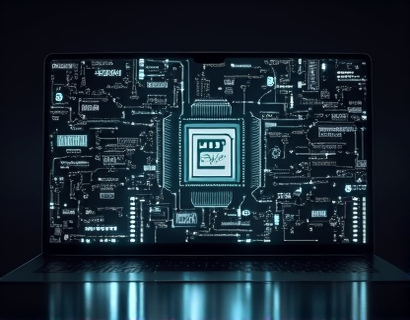Invoicing Simplified: Revolutionizing Document Management for Businesses
In the fast-paced world of business, efficient document management is crucial for maintaining productivity and ensuring financial success. Traditional invoicing processes can be cumbersome, time-consuming, and prone to errors. However, with the advent of advanced software solutions, businesses can transform their invoicing and document management processes, leading to significant improvements in efficiency and accuracy. This article delves into how modern invoicing software can revolutionize financial document creation and tracking, enabling businesses to focus on growth while maintaining a streamlined and organized financial workflow.
Understanding the Challenges of Traditional Invoicing
Before exploring the benefits of modern invoicing software, it's essential to understand the challenges faced by businesses with traditional invoicing methods. Manual invoicing involves several steps, from creating the invoice to sending it to the client and tracking its status. Each step is prone to human error, which can lead to delayed payments, incorrect invoices, and lost revenue. Additionally, managing a large volume of invoices and financial documents can be overwhelming, requiring significant time and resources.
Traditional invoicing methods often rely on paper-based systems or basic software that lacks advanced features. These systems do not offer real-time tracking, automated reminders, or integration with other financial tools. As a result, businesses may experience delays in payment cycles, increased administrative costs, and a higher risk of errors. The lack of automation and centralization in traditional invoicing processes can hinder a company's ability to scale and maintain financial discipline.
How Modern Invoicing Software Simplifies Document Management
Modern invoicing software addresses these challenges by providing a comprehensive solution that streamlines the entire invoicing process. These advanced tools are designed to simplify document management, enhance productivity, and ensure timely payments. Here's how they achieve this:
Automated Invoice Creation
One of the most significant advantages of modern invoicing software is the ability to create invoices automatically. Users can set up templates and rules that populate invoice details based on predefined criteria. This automation reduces the time spent on manual data entry and minimizes the risk of errors. For instance, invoices can be generated based on sales orders, project milestones, or custom fields, ensuring consistency and accuracy in every invoice.
Moreover, automated invoice creation can integrate with other business systems such as CRM, ERP, and accounting software. This integration ensures that all relevant data is up-to-date and accurately reflected in the invoices, reducing the need for manual adjustments and double-checking.
Real-Time Tracking and Management
Modern invoicing software provides real-time tracking and management of financial documents. Once an invoice is created, it can be easily sent to clients via email or through a secure portal. The software tracks the invoice's status, from sent to paid, and provides detailed reports on payment cycles and outstanding balances. This real-time visibility helps businesses monitor their cash flow more effectively and take proactive measures to address any delays.
Additionally, users can set up automated reminders and notifications to follow up with clients who are late in paying their invoices. These reminders can be customized based on the payment history and preferences of each client, ensuring a personalized and efficient follow-up process.
Centralized Document Storage
One of the key features of modern invoicing software is centralized document storage. All invoices, receipts, and financial records are stored in a secure, cloud-based environment, accessible from anywhere with an internet connection. This centralization eliminates the need for physical storage and reduces the risk of document loss or damage.
Users can easily search, categorize, and organize their financial documents using tags, folders, and advanced search filters. This organization makes it simpler to retrieve specific documents when needed, saving time and reducing administrative overhead. Moreover, version control features ensure that the most up-to-date document is always used, preventing confusion and errors.
Integration with Other Financial Tools
Modern invoicing software is designed to integrate seamlessly with other financial tools and systems. This integration enhances the overall efficiency of financial workflows by eliminating the need for manual data transfer between different platforms. For example, invoicing software can integrate with accounting software to automatically update general ledger accounts, reduce manual bookkeeping, and ensure accurate financial reporting.
Other integrations may include payment gateways, bank reconciliation tools, and budgeting software. These connections allow for a more holistic view of financial operations, enabling businesses to make informed decisions and optimize their financial strategies.
Enhancing Productivity and Focusing on Growth
The benefits of modern invoicing software extend beyond just simplifying document management. By automating routine tasks and providing real-time insights, these tools significantly enhance productivity, allowing businesses to focus on core activities that drive growth.
Firstly, the automation of invoice creation and follow-up processes frees up time that would otherwise be spent on manual tasks. Employees can dedicate more time to strategic initiatives, customer relationships, and revenue-generating activities. This shift in focus helps businesses maximize their operational efficiency and improve overall performance.
Secondly, the real-time tracking and reporting features of modern invoicing software provide valuable insights into financial performance. Business owners and managers can monitor key metrics such as cash flow, payment delays, and invoice accuracy with ease. These insights enable data-driven decision-making, helping businesses identify areas for improvement and implement corrective actions promptly.
Furthermore, the centralized and organized nature of modern invoicing software reduces the risk of errors and discrepancies. Accurate financial records lead to better financial planning, budgeting, and forecasting. This accuracy is crucial for maintaining the trust of stakeholders, securing funding, and ensuring long-term sustainability.
User-Friendly Interface and Accessibility
Despite its advanced features, modern invoicing software is designed with the user in mind. The user-friendly interface ensures that even those with limited technical expertise can navigate the platform with ease. Intuitive dashboards, clear navigation, and comprehensive help resources make it simple to get started and maximize the software's potential.
Accessibility is another key aspect of modern invoicing solutions. Cloud-based platforms allow users to access their invoices and financial data from any device with an internet connection, whether at the office, home, or on the go. This flexibility supports remote work and ensures that business operations continue smoothly, regardless of location.
Case Studies and Success Stories
To better understand the impact of modern invoicing software, let's look at a few success stories from businesses that have implemented these solutions:
A mid-sized manufacturing company faced significant challenges with manual invoicing, leading to delayed payments and inconsistent financial records. After adopting a modern invoicing software, the company saw a 40% reduction in invoice processing time and a 30% improvement in cash flow. The automated reminders and real-time tracking features helped the company maintain better communication with clients and ensure timely payments.
Another example is a consulting firm that struggled with managing a large volume of invoices and financial documents. By using modern invoicing software, the firm streamlined its invoicing process, reduced errors, and improved client satisfaction. The centralized document storage and advanced reporting tools enabled the firm to provide more accurate financial insights to its clients, leading to increased trust and new business opportunities.
These case studies demonstrate the tangible benefits of modern invoicing software, from improved efficiency and accuracy to enhanced client relationships and growth.
Conclusion
In conclusion, modern invoicing software represents a significant advancement in document management for businesses and professionals. By automating routine tasks, providing real-time tracking, and offering centralized storage, these tools transform the invoicing process, leading to increased productivity and financial discipline. As businesses continue to seek ways to optimize their operations and focus on growth, adopting advanced invoicing solutions becomes an essential step towards achieving these goals.
While the benefits are clear, it's important to choose a software that aligns with your specific needs and workflow. Consider factors such as ease of use, integration capabilities, and customer support when selecting the right solution. By doing so, you can ensure a smooth transition and maximize the potential of modern invoicing software in your business.










































